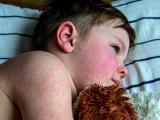Jul 26, 2011
CDC: Papaya Salmonella strain has links to earlier outbreak
The US Centers for Disease Control and Prevention (CDC) said today that two more patients have been sickened in a multistate Salmonella Agona outbreak linked to papayas imported from Mexico. The new reports push the total to 99 cases, and the number of affected states stayed the same at 23. The distributor, Agromod Produce based in McAllen, Tex., recalled the papayas it sells under four different brand names after tests found the outbreak strain in produce samples from its facility and from papayas at a US border station that were bound for the company. The CDC also said the outbreak strain is made up of four closely related pulse-field gel electrophoresis (PFGE) patterns that have rarely been seen in its PulseNet, an electronic network for sharing molecular fingerprinting. Three of the patterns were first identified starting in 2010 and were seen in 119 patients from 14 states between May 28 and Sep 10, 2010; however, an investigation that summer by the CDC and its partners did not find an outbreak source, though the probe focused on fresh fruit, including papaya. The CDC said the profile of last year's outbreak resembles the current one.
Jul 26 CDC outbreak update
Jul 25 CIDRAP News story
Group says Aichi virus an authentic human pathogen
Research from Germany and Russia identified human shedding of Aichi virus (AiV) but no other viral or bacterial agents in patients with gastroenteritis, substantiating the virus's pathogenicity, according to an online report from Emerging Infectious Diseases (EID). AiV, a novel human picornavirus, genus Kobuvirus, was described first in 1991 and has been linked with spontaneous and food-associated diarrhea in humans and found in contaminated water, but no quantitative data on viral shedding have been available. Stool samples from outpatients with gastroenteritis were tested through a highly sensitive real-time reverse-transcription polymerase chain reaction (RT-PCR) targeting a specific region of the virus. AiV but no other pathogen was detected in 10 (2%) of 499 patients with gastroenteritis; none of 39 controls or 118 patients involved in a foodborne outbreak tested positive for AiV (differences between groups were not statistically significant ). All AiV patients had abdominal pain, diarrhea, or nausea, and in none was there a clear association with a foodborne cause, sociologic risk factor, or contact with animals. Samples were collected throughout 2004, but all AiV cases occurred from October to December of that year in a geographically limited area. After further testing, the authors concluded that "The temporal and geographic accumulation of cases, together with the observed sequence variation, supports locally and temporally restricted circulation of AiV with human-to-human transmission, rather than a point-source epidemic pattern as observed in foodborne infections."
August EID article
Democratic Republic of Congo measles deaths top 1,000
A measles outbreak in the Democratic Republic of Congo (DRC) has killed 1,145 children so far this year, the United Nations (UN) said today. The group's Office of Humanitarian Affairs said the epidemic has sickened 115,600 children this year. The totals reflect a steep rise: last year the country reported 5,407 infections and 82 deaths. A UN-coordinated campaign has vaccinated 3.1 million children. The $1.9 million vaccination drive, which launched on May 10, targeted youngsters in the country's Katanga, Kasai Occidental, Bas-Congo, Equateur, and Orientale provinces. Fidele Sarasso, the UN's humanitarian coordinator in the DRC, said in the statement, "We thank our partners and urge them to continue supporting us, especially now that DRC is facing other epidemics, including cholera in the west of the country."
Jul 26 UN press release
WHO fine-tunes yellow fever risk maps
A World Health Organization (WHO) working group today released its revised yellow fever risk map and recommendations for vaccination, which take into account the latest disease epidemiology changes. The group, which has been meeting since March 2010, published its findings in the August issue of Lancet Infectious Diseases. Their recommendations influence addition or removal of countries from international travel health publications. They adopted a new term, "low potential for exposure, " which means potential exposure would occur only in rare circumstances. They also suggested changing the risk map to a vaccination map, a move designed to ease use for clinicians. They noted that vaccination isn't typically recommended in countries with low potential for exposure unless itineraries put travelers at greater risk or the benefits of vaccination outweigh the risk of vaccine-related adverse events.
Aug Lancet Infect Dis abstract
Study: Special surveillance systems spotted some pandemic H1N1 deaths
Surveillance using unexplained-death and medical examiner data was able to identify deaths associated with pandemic H1N1 influenza beyond those detected by hospital-based surveillance, according to a new study in EID. Three states—Minnesota, New Mexico, and Oregon—detected 34 (18%) of 194 total pandemic-related deaths from April through December 2009 through their use of the Centers for Disease Control and Prevention Unexplained Deaths Program (UNEX) and the Medical Examiner Infectious Disease Death Surveillance Program (Med-X). UNEX began in 1995 and is aimed at investigating deaths likely resulting from an infection but for which no pathogen is identified on routine testing. Med-X, developed in 1999, uses preestablished sets of symptoms and pathologic syndromes to review deaths for infectious causes. The authors see surveillance systems like UNEX and Med-X as "a means of quickly detecting emerging, severe infectious disease threats," and comment, "During an emerging pathogen epidemic, it is important to investigate deaths occurring outside of traditional settings to determine if sudden deaths occurring in the community are a result of a novel pathogen."
August EID article
Report discusses risk of Rift Valley fever invasion in US
Rift Valley fever (RVF), a viral disease of livestock and humans that is currently confined to Africa and parts of the Middle East, could be introduced into the United States by mosquitoes, through livestock trade, or by wildlife hosts, according to a report published online by EID. The report is a summary of discussions by experts who met in 2007 and again in 2009 to discuss the potential effects if RVF spread to the US. The febrile disease causes high death rates in calves and lambs but is usually mild in humans, though it can be severe in some instances. The report cites many gaps in RVF knowledge and response capabilities. It says the ability of current passive case surveillance to detect and rapidly report infections is doubtful, and there is a lack of rapid diagnostic tools and field-deployable assays that can be standardized. Further, research on the potential for wildlife hosts of RVF is needed, because if animals such as deer and elk became carriers, controlling the virus's spread would be difficult or impossible. Also, little is known about the ability of mosquitoes that carry RVF to overwinter in the US climate. The participants also cited a need for vaccines and antiviral drugs.
Jul 25 EID report on RVF
Modeling tool called useful for predicting where West Nile might strike
During a West Nile virus (WNV) epidemic in California in 2005, a prediction system based on public reports of dead birds proved to be a very effective method for identifying areas at high risk for WNV infection in humans, according to an early online report from EID. The Dynamic Continuous-Area Space-Time (DYCAST) system "detects statistically significant spatiotemporal clustering of dead bird reports by modeling the WNV amplification cycle using biological parameters" and also includes a method for assessing the effectiveness of human case predictions, the report says. The system was used in several California counties totaling 32,517 square kilometers, where daily risk maps were posted online and used by local agencies to target public education campaigns, surveillance, and mosquito control in 2005. High-risk areas were identified an average of 37.2 days before onset of human illness, providing enough time to respond with preventive efforts. The system had 80.8% sensitivity and 90.6% specificity for predicting human cases. The system's predictive accuracy during 2006 to 2009 was lower than in 2005, possibly in part because its widespread use contributed to successful efforts to interrupt WNV transmission, the report says. Nonetheless, it adds, the tool proved an effective and timely warning system in 2005, and adaptation of the method may be useful for detecting other infectious diseases.
Jul 25 EID report


















